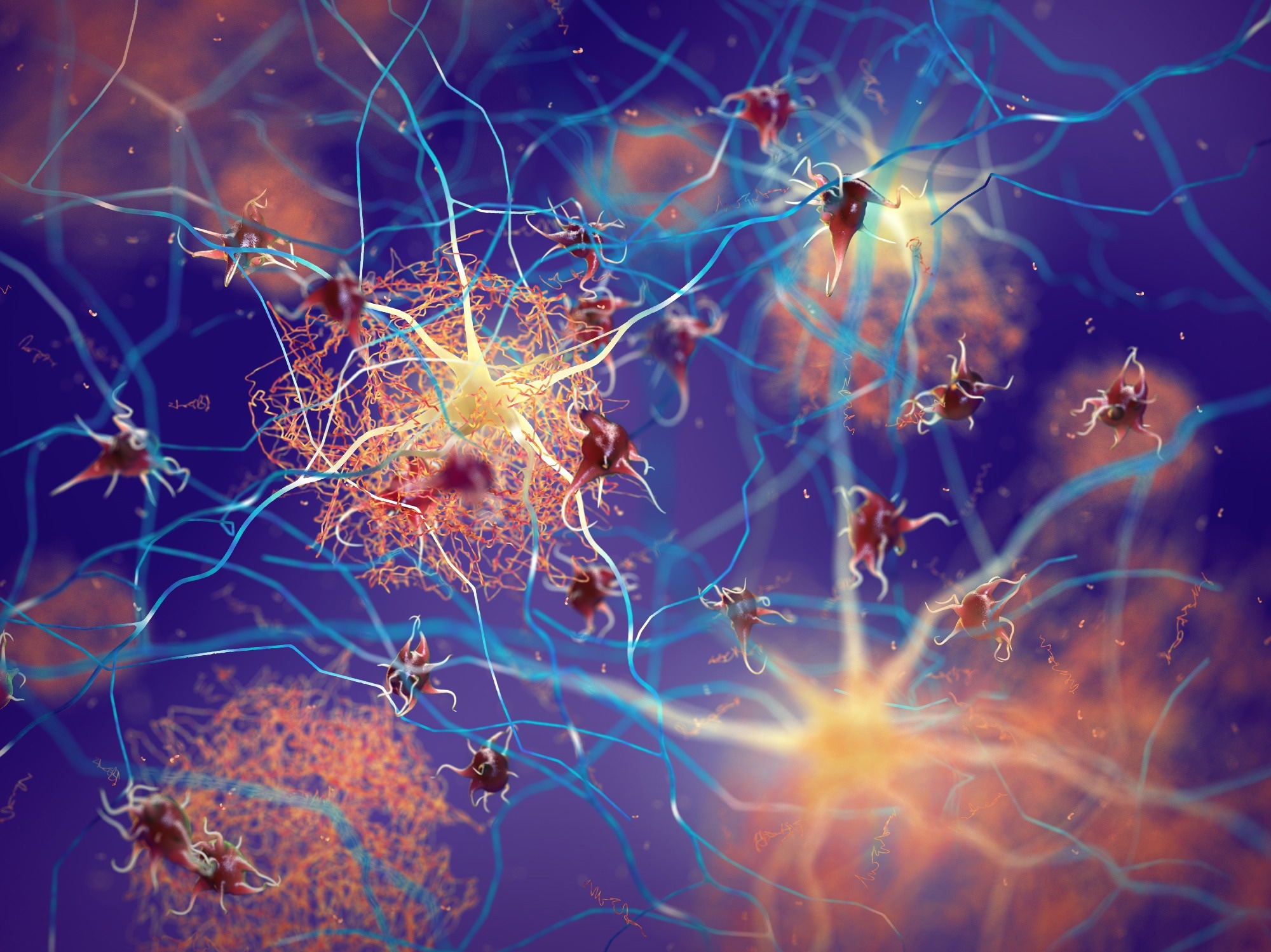The SARS-CoV-2 pandemic and the long-term neurological complications that resulted in patients, referred to as long-coronavirus disease (COVID), have rekindled interest in the relationship between viral infections and neurodegenerative brain illnesses. While many viruses, including the herpes simplex virus type 1(HSV-1), can infect the central nervous system (CNS) and cause acute or chronic infections, a direct mechanistic connection between viruses and aggregation of proteins into amyloids—a feature of several neurodegenerative diseases—has proven difficult to establish.
 Study: SARS-CoV-2 and HSV-1 Induce Amyloid Aggregation in Human CSF. Image Credit: nobeastsofierce / Shutterstock
Study: SARS-CoV-2 and HSV-1 Induce Amyloid Aggregation in Human CSF. Image Credit: nobeastsofierce / Shutterstock

 *Important notice: bioRxiv publishes preliminary scientific reports that are not peer-reviewed and, therefore, should not be regarded as conclusive, guide clinical practice/health-related behavior, or treated as established information.
*Important notice: bioRxiv publishes preliminary scientific reports that are not peer-reviewed and, therefore, should not be regarded as conclusive, guide clinical practice/health-related behavior, or treated as established information.
About the study
In the present study, researchers demonstrated that ex vivo protein amyloid aggregation was caused by HSV-1 and ultraviolet (UV)-inactivated SARS-CoV-2 in the human CSF.
The team incubated live HSV-1 virus, and UV-inactivated SARS-CoV-2 virus with CSF obtained from healthy persons to determine whether viral particles could catalyze amyloid aggregation of proteins present in a complex human biofluid. The thioflavin-T (ThT)-assay was employed in which ThT fluorescence was amplified upon binding to amyloid fibrils to track the viruses' capacity to cause amyloid production. Additionally, the team observed the amyloid formation caused by the viruses in the CSF using transmission electron microscopy (TEM).
Furthermore, the amyloid aggregates produced by the viruses were collected and purified in order to describe the proteins found in the amyloid fractions. This was achieved by washing, centrifuging, and solubilizing the amyloid fraction in 99% formic acid after removing the associated non-amyloid proteins with 4% sodium dodecyl sulfate (SDS).
Results
The study results showed that CSF with no virus added did not show any significant signal of amyloid aggregation increasing over time. While CSF having both viruses was able to cause protein amyloid aggregation in the CSF. Moreover, a considerably weaker signal was produced by other controls, such as virus-only and non-infected cell media, which was consistent with that observed for isolated amyloidogenic proteins. The CSF with added virus produced a maximal ThT fluorescence amplification that was noticeably greater than all the controls. At the surface of HSV-1 and SARS-CoV-2, the team observed numerous fibrillar amyloid structures interacting, which indicated surface-mediated catalytic nucleation (HEN) processes.
Concerning the proteins present in untreated CSF, the proteomic analysis showed that a significant number of proteins were enriched in the virus-induced amyloid fractions. In comparison to untreated CSF, 279 proteins were found to be enriched in the virus-induced amyloid fractions. The amyloid fractions produced by both viruses had more than 40% of the enriched proteins that were shared, while the amyloid fractions produced by HSV-1 had 37%, and SARS-CoV-2 had 23% unique proteins. The high expression of some proteins in the CSF close to their supersaturation levels possibly made them more susceptible to aggregation catalysts, as evidenced by the considerable overlap between the groups of proteins enhanced by the two viruses.
In plaques obtained from Alzheimer's disease (AD) patients, the team discovered 135 proteins, including amyloid beta precursors like protein 1 (APLP1), 2-macroglobulin, apolipoprotein E (ApoE), and clusterin. Additionally, proteins related to other amyloid diseases, such as transthyretin (TTR) and vitronectin, as well as proteins linked to Parkinson's disease (PD), including ceruloplasmin, 14-3-3, nucleolin, and phosphoglycerate kinase 1 (PGK-1) were observed. These findings showed that viral particles were capable of catalyzing the amyloid aggregation of several proteins in human CSF.
Conclusion
The study findings showed that HSV-1 and SARS-CoV-2 triggered a variety of proteins to aggregate in human CSF. The study also showed that UV inactivation did not eliminate viral particles' capacity to serve as a catalytic surface for amyloid nucleation. Therefore, given the significant catalytic function that viruses can play in this process, the role of viruses as the causative agents of protein aggregation in neurodegeneration needs to be reevaluated. Due to the SARS-CoV-2 pandemic, which has left many patients with long-lasting neurological symptoms after infection, it is crucial to understand the processes by which viruses can induce neurological problems.

 *Important notice: bioRxiv publishes preliminary scientific reports that are not peer-reviewed and, therefore, should not be regarded as conclusive, guide clinical practice/health-related behavior, or treated as established information.
*Important notice: bioRxiv publishes preliminary scientific reports that are not peer-reviewed and, therefore, should not be regarded as conclusive, guide clinical practice/health-related behavior, or treated as established information.
Journal reference:
- Preliminary scientific report.
SARS-CoV-2 and HSV-1 Induce Amyloid Aggregation in Human CSF, Wanda Christ, Sebastian Kapell, Georgios Mermelekas, Bjorn Evertsson, Helena Sork, Safa Bazaz, Oskar Gustafsson, Michal J. Sobkowiak, Eduardo I. Cardenas, Viviana Villa, Roberta Ricciarelli, Johan K Sandberg, Jonas Bergquist, Andrea Sturchio, Per Svenningsson, Tarja Malm, Alberto J. Espay, Maria Pernemalm, Anders Linden, Jonas Klingstrom, Samir EL Andaloussi, Kariem Ezzat, bioRxiv 2022.09.15.508120, DOI: https://doi.org/10.1101/2022.09.15.508120, https://www.biorxiv.org/content/10.1101/2022.09.15.508120v1